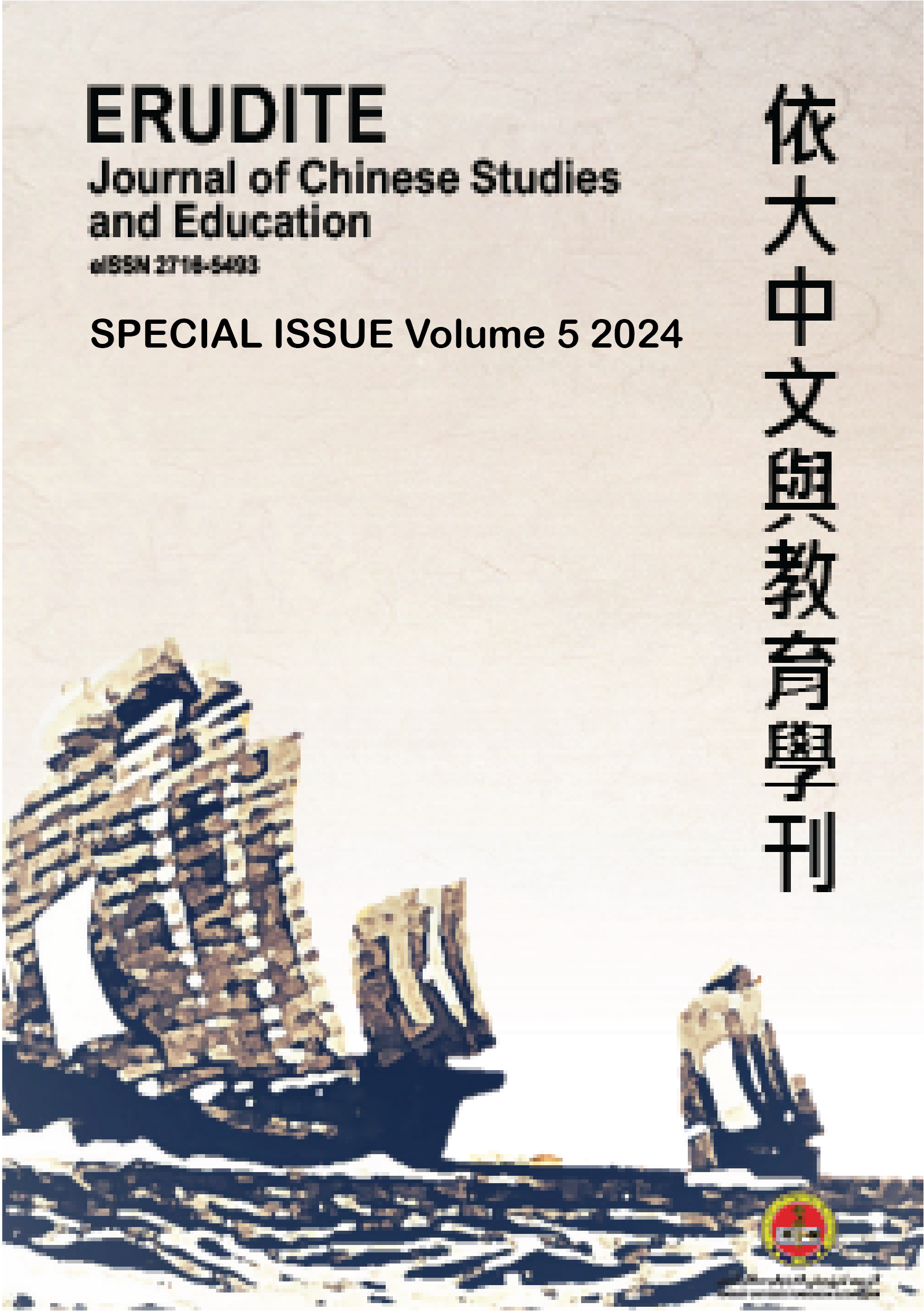李渔结构论——从《十二楼》谈起
The Structural Analysis of Li Yu’s Twelve Towers
DOI:
https://doi.org/10.37134/erudite.vol5.sp.13.2024Keywords:
李渔, 十二楼, 闲情偶寄, 结构论Abstract
清初戏曲家李渔“结构论”为中国戏曲发展史的重要理论,本文从他具有文章结构概念的话本小说《十二楼》谈起,探讨李渔在《闲情偶寄》提出“结构第一”理论前,如何以“楼”的结构之技贯穿结构之道,架起故事人物活动空间与主题寓意。下文以《十二楼》的文本阅读分析为研究方法,辅以李渔《闲情偶寄》的词曲结构理论及他擅长的园林艺术融入讨论,探究小说叙事的显层技巧性结构及其深层的哲理性结构。李渔谓营建房子与读书作文当以标新创异为尚,由此可见他为才子佳人的陈旧题材注入新颖的叙事策略。“楼”作为叙事作品的核心结构新奇有趣,在当下读者“喜读闲书,畏听庄论”的氛围下,可先把读者吸引进故事,再达致规正风俗的劝谏作用。学者讨论李渔作品结构论多从《闲情偶寄》出发,本文从其《十二楼》谈起,窥探李渔作文立言的态度。
Li Yu, a playwright in the early Qing Dynasty, proposed the significant “structural theory” for the development of Chinese drama. This paper begins by discussing the concept of structural organization in his vernacular novel Twelve Towers, exploring how Li Yu, prior to putting forth the “structure comes first” theory, used the construction of “towers” as a narrative framework in the novel, to establish the spatial and thematic significance for the characters and activities within the story. Applying literature analysis of Twelve Towers as the research method, and supplementing it with Li Yu’s structural theory from Random Thoughts and Essays and his expertise in incorporating garden art, the paper delves into the conceptualization and construction process of the “tower” in Li Yu's novels. Li Yu emphasized the novelty of building a narrative like constructing a house, diverging from conventional themes of talent and honour. His narrative strategy not only captivates readers by leveraging the allure of idle literature but also subtly critiques societal norms, aligning with the prevailing taste for light-hearted reading over solemn arguments. While scholarly discussions often centre on Li Yu's later work Random Thoughts and Essays, this paper uniquely starts with Twelve Floors to illuminate Li Yu's evolving compositional philosophy and narrative techniques.
Keywords: Li Yu, Twelve Tower, Random Thoughts and Essays, structural analysis
Downloads
References
一、 传统文献
清·李渔,《闲情偶寄》(台北:长安出版社,1979)。
清·李渔著,陶恂若校注:《十二楼》(台北:三民书局,1998)。
二、 近人论著
杨义,《中国叙事学》,《杨义文存》第1卷(北京:人民出版社,1997)。
黄丽贞,《李渔研究》(台北:纯文学出版社,1974)。
三、 期刊论文
王磊,〈论李渔戏剧结构论〉,《大理学院学报》,2008年第7卷第9期,页56-60。
申丹,〈何为“不可靠叙述”? 〉,《外国文学评论》,2006年第4期,页133-143。
徐大军,〈李渔“结构第一”理论的思路与内涵新探〉,《求是学刊》,2008年第35卷第2期,页109-113。
四、 学位论文
张春娟,〈浅谈李渔的戏曲结构论〉(山西:山西大学中文系硕士论文,2008年6月)。
陈佳彬,〈李渔戏曲作品及其理论研究〉(中坜:国立中央大学中国文学研究所博士论文,2011)。
钟筱函,〈李渔戏曲结构论〉(广州:华南师范大学中文系硕士论文,2002年6月)。
Downloads
Published
How to Cite
Issue
Section
License
Copyright (c) 2024 Ooi Sing Ee

This work is licensed under a Creative Commons Attribution-NonCommercial-ShareAlike 4.0 International License.





